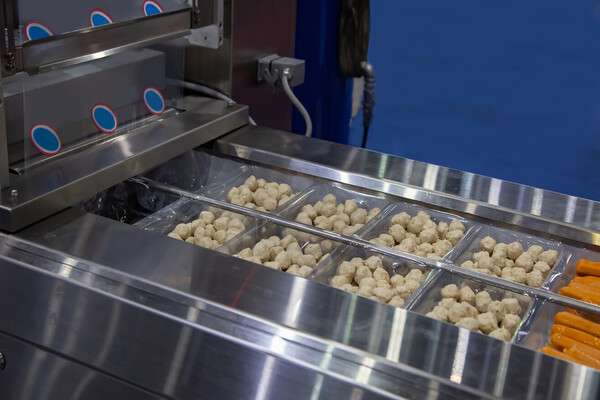
Solutions
Filling Solutions
Conveying Systems
End of the Line Packaging
Packaging Machines
Inspection Systems
FREE CONSULTATION
June 14, 2023
Filling machine plays a crucial role in the packaging industry, ensuring accuracy and efficiency in filling containers with various products. This article explores the definition and functionality of various types of machines used for filling and how they operate to achieve the desired outcomes.
Considering that machinery is a sizable investment for any business, you need to know the ins and outs of how it works. Read on to ensure you make an informed decision.

These machines do precisely what they say — they fill containers with products (accurately and efficiently). Depending on their design, they can handle different types of products, including liquids, solids, powders, granular items, and semi-solids.
Because of their versatility, they are commonly used in the food and beverage, pharmaceutical, chemical, and cosmetics industries. However, packagers can choose either manual or automatic versions, with the latter being faster and more precise.
Several machines are available, each catering to different product types and filling requirements. Some of the most common types of filling equipment include:
It is explicitly designed for containers with powdery substances, such as spices, flour, or pharmaceutical powders. An auger or impelling system is typically used to control the powder's flow.
Perfect for filling containers with solid items such as tablets, capsules, or candies. These machines usually employ a mix of vibration and mechanical sorting systems to ensure accurate product placement.
They are crafted to fill containers with various liquid products, like beverages, sauces, and chemicals. These machines utilize diverse filling mechanisms to accommodate the liquid's viscosity and flow properties.
Designed for filling pre-made pouches or bags with various products, including liquids, powders, or solids, they often combine filling and sealing mechanisms to produce a finished product.
Created for filling bottles with various products, from liquids to powders to solids. These machines frequently incorporate capping and labeling functions as well.
Ideal for jars or tins with products such as jams, preserves, or creams. A jar-filling machine typically employs a piston or pump filling system, guaranteeing precise and consistent filling.
Filling machinery operates through a series of steps to ensure the accurate filling of containers. Here is a general outline of the process:
Containers are loaded onto the machine, either manually or automatically, depending on the machine's configuration.
The machine aligns the containers to ensure proper filling. This step often involves using guide rails, belts, or conveyor systems.
The filling mechanism, such as a pump, piston, or gravity system, dispenses the product into the container. This process can be continuous or intermittent, depending on the machine's design and the product being filled.
Sensors or other verification methods employed by the filling machine manufacturer ensure that the correct amount of product has been dispensed into each container.
If applicable, the machine will seal the container using capping, lidding, or heat sealing methods.
Once filled and sealed, the containers are discharged from the machine and moved on to the next phase of the packaging process, such as labeling or palletizing.
These machines employ a variety of mechanisms to transfer products into containers. Some widely-used filling mechanisms are:
These fillers rely on gravity to distribute the product, making them perfect for free-flowing liquids. The liquid filling machine fills containers to a predetermined level, ensuring precise filling, while any excess product seamlessly flows back into the supply tank.
Ideal for liquids with differing viscosities, pump filling systems utilize a pump, often controlled by a servo motor, to accurately dispense the product into the container.
Piston fillers draw and release the product using a piston mechanism. This filling system is well-suited for products with a broad range of viscosities, including thick pastes and creams.
Designed to fill containers to a specific level regardless of container size variations, overflow filling systems are ideal for thin, free-flowing liquids and guarantee a consistent fill level across all containers.
This filling technique positions the nozzle at the container's base and raises it while filling. It's suitable for foamy or viscous products, as it minimizes air introduction and agitation during filling.
Fillers are a critical aspect of the packaging process, ensuring efficient and accurate filling of containers with various products.
Selecting the right filling machinery for your packaging needs depends on the type of product, its viscosity, and the specific packaging process requirements. It's essential to understand the various types of filling systems and mechanisms to choose the best solution for your business.
Contact Plan IT Packaging for a reliable filling machine tailored to your needs. Our team of experts will guide you through the process and help you find the perfect solution to optimize your packaging process and ensure the highest levels of efficiency and accuracy.